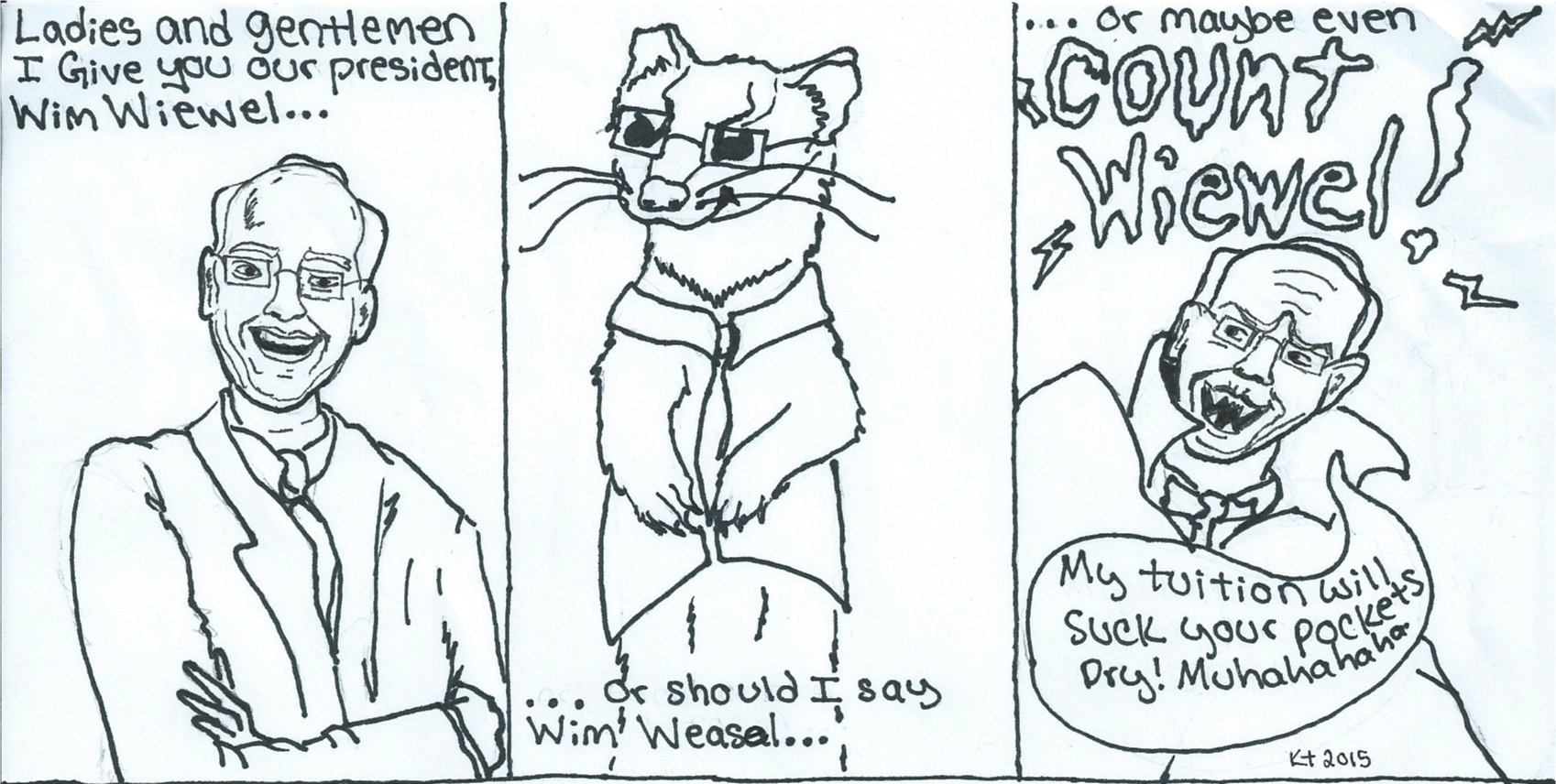Bucking toward the future
Two years ago, Howard Barney approached Peter FitzGerald with an ambitious idea to create an electric horse. Today, that project has become an exciting, ongoing project that links high school students interested in learning about robotics, engineering and computer science to Portland State.
Barney, an engineer with Bayhouse Corp., conceived of a “21st century soapbox derby competition that will not use soapbox racers, but rather, will use electric horses.” FitzGerald, part of the Youth Transition Program at Tigard High School, “ran with the idea,” Barney said. Also pertinent to the implementation of the project was Bruce Schafer, Director of Outreach Programs at the Oregon College of Engineering and Computer Science, and Marek Perkowski, Professor of Electrical Engineering at Portland State.
What, one might ask, is an “electric horse”? According to the project’s mission statement, the horse “should evolve to a self-contained, robotic, microprocessor, servomotor, pneumatic, or hydraulically driven device” with an electric brain. Essentially, the final product will be a life-sized robotic horse with some sort of artificial intelligence, making it possible for the horse to march in the Rose Parade, speak and maybe respond to human communication.
Beginning with about 22 local high school students, the project was met with great enthusiasm. Teenagers were dedicating several hours a week to working on the technology, and student mentors – Portland State undergraduates – were on hand to assist the students. The teenagers’ abilities varied, some students coming in with the ability to jump into software and programming quickly and others working on more simplistic mechanical projects.
One of the special features of the project is that it involves mentally challenged high school students. So far, students with Attention Deficit Disorder and autism have participated, but no students with physical disabilities have taken part in the project. “Most of the disabled students really adjust well, doing something simple, for instance building heads,” Perkowski said. “Some are more artistic, while others prefer to do more mechanical projects.”
All of the students involved, according to Perkowski, are among the brightest students in the state interested in this type of work. It was originally conceived that the students would learn cooperatively, helping each other out and working together to accomplish their goals.
Although somewhat successful in that sense, Perkowski also noted that it has been a challenge, since the level of knowledge and skill varies. “It doesn’t always work that way because the brightest students are just too bright and there’s no way to collaborate.”
Although those involved are still enthusiastic, some of the excitement may have worn off. Perkowski has difficulty finding lab managers to act as student mentors for the high school students. “I am looking for PSU students who want to be a robotics lab manager and dedicate time every day, but I cannot find anyone. We don’t have much money to pay them, and they go to better paying jobs.”
Getting the high school students to dedicate their time to the project also seems to be a challenge. Although the program started with over 20 interested students, that number has gone up and down since the first year. Now, there are four or five truly dedicated key players who comprise the core of the team, all but one returning from last year.
According to Barney, however, the project was meant to be passed on from one group to the next. In their mission statement, the Electric Horse team explicitly states, “a team’s horse is passed on year to year and evolves as each new team tackles the jobs of adding features and evolving the design.”
Working in both the robotics lab at Portland State and Barney’s workshop, the students are currently creating the third electric horse model, this one almost the size of a pony. With a gift from Mabuchi Motors, the horse is expected to operate with 12 motors originally designed for electric car windows. Barney said the team is working on circuit boards that will drive the motors, sense weight distribution on the feet, and tell the motors what to do – such as walk, trot or run – as well as computer architecture and software.
As a process of evolution, Barney said the project is open-ended. The short term goal, however, will be to enter the horse in the 2002 or 2003 Rose Parade. After that, Barney said, “Maybe run in the Kentucky Derby and win – who knows?”




